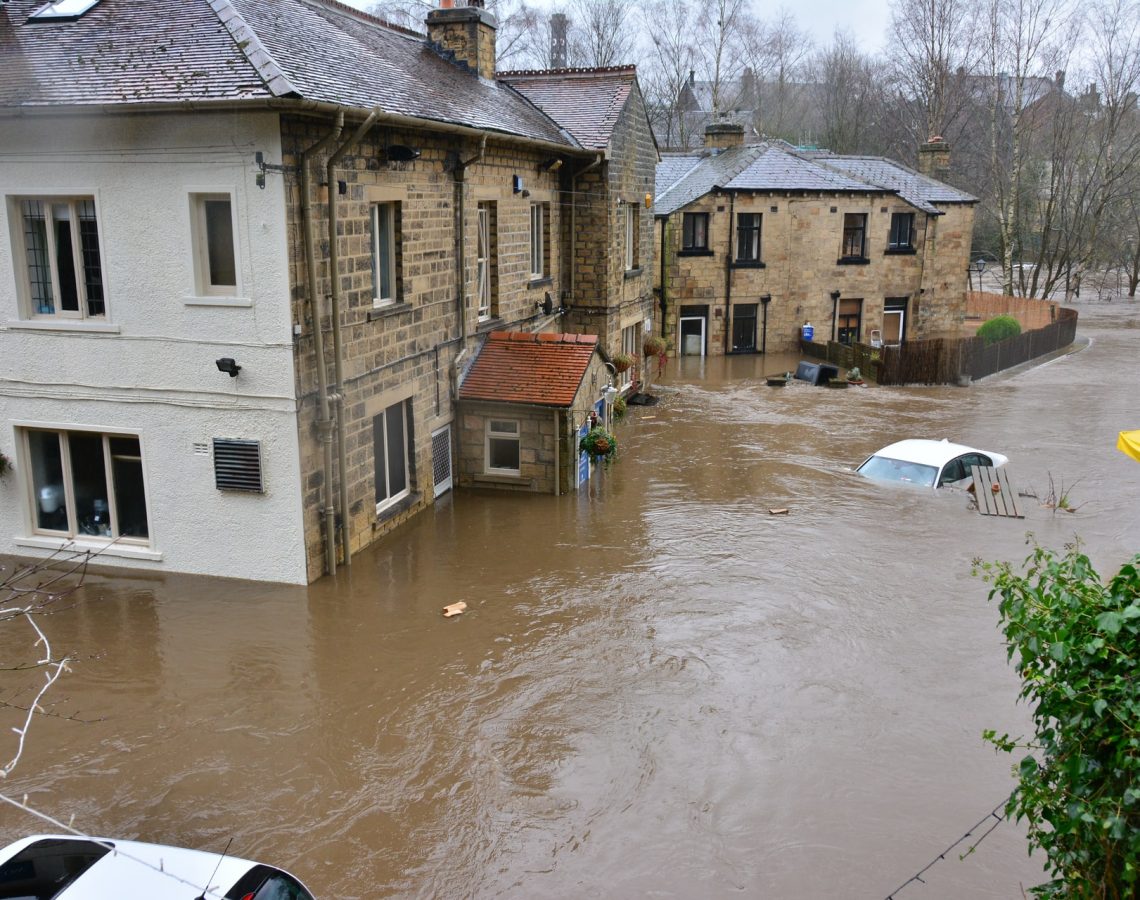Storm Season Highlights the Importance of Flood Warning and Evacuation Plans

This autumn and winter has already seen 10 named storms hit the UK, significantly higher than the average of six or seven, and the season is not over yet. Sadly, all of these storms have resulted in flooding events across parts of the country, with some areas impacted more than once. This can be heart-breaking and traumatic for the homeowners and businesses that are affected, and some of our teams here at RAB have been working hard to help communities re-build and implement various Property Flood Resilience (PFR) measures.
Another important component that communities and businesses are increasingly putting in place are Flood Warning and Evacuation Plans. At RAB, we have supported numerous clients and homeowners by producing bespoke Flood Warning and Evacuation Plans tailored to address the complexities of the flood risk associated with the specific site and organisation. These plans not only meet guidelines but also comprehensively safeguard lives, properties, and the overall resilience of the community.
As part of our commitment to providing top-tier flood warning and evacuation plans, Saajeda Bandali and Gavin Wilson recently worked with a Primary School in Kent to create a comprehensive strategy tailored to their unique risk factors.
The Challenge: Fluvial and Surface Water Flooding
The school is situated in an area prone to both fluvial and surface water flooding, adding to the complexity of flood risk within the area. To ensure the safety of students, staff, and visitors, the school contacted RAB to come up with a robust solution.
Our Approach: Tailored Plan and Proactive Decision-Making
Each location has its own set of challenges when it comes to flood risk. In close collaboration with the school, our team conducted a thorough flood risk assessment and developed a customised flood warning and evacuation plan.
Key Features of the Plan:
- Site Assessment: a key part of the plan was to understand the site including facilities, existing plans and procedures and the demographics of the students, staff, and visitors.
- Flood Risk Assessment: We assessed and analysed the risk of flooding to the site from numerous sources including fluvial, surface water and artificial sources. An essential element to this risk assessment was ensuring that we effectively presented and conveyed technical information in a manner that allows the intended audience to understand and use this information during a flood event.
- Roles and Responsibilities: Actions and accountabilities of those who would be involved during a flood event were identified and outlined.
- Trigger and Response Levels: As part of the flood response procedures, we established clear trigger levels which act as indicators for the school to make informed decisions before, during, and after a flood event. These trigger levels are essential for proactive response and risk mitigation and ensure responders are equipped with the information they require.
- Warning and Informing Arrangements: Understanding and facilitating an efficient line of communication for warning and informing students, parents, staff, visitors, and relevant authorities during flooding was crucial for safeguarding lives in the future. Arrangements were put in place to ensure seamless integration with existing procedures.
- Invacuation and Evacuation Procedures: By leveraging the close relationship that the school maintains with its neighbouring schools, we identified evacuation procedures, including routes and assembly points. This ensures a safe and efficient process in the event of a flood incident. To prevent duplication of procedures, we conducted an assessment of existing plans and procedures, streamlining the integration of additional measures.
- Templates, Tools, and Useful Information: Finally, we ensured that responders at the school were equipped with essential information, tools, and templates required to manage the incident.
Results: A Resilient School Ready for Any Challenge
Through the collaborative efforts of RAB and the school, the implementation of the flood warning and evacuation plan has increased the school’s resilience against potential flooding. The proactive measures implemented empower the school community to make timely decisions, thereby minimising risks and ensuring the safety of all stakeholders.
RAB deliver a wide range of resilience and flood risk services for both public and private sector organisations. More information is available here on our website, or you can get in touch for an informal discussion on your specific project by email enquiries@rabconsultants.co.uk or call our head office in Lichfield on 01543 547303.

